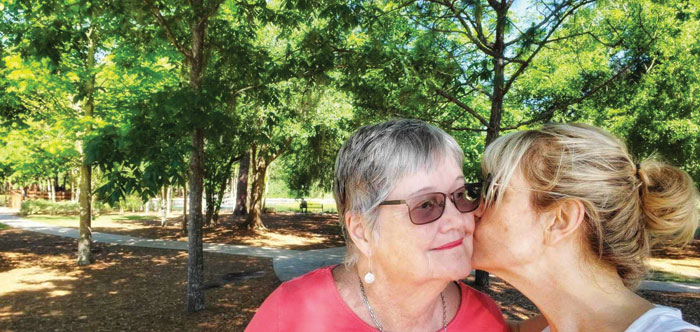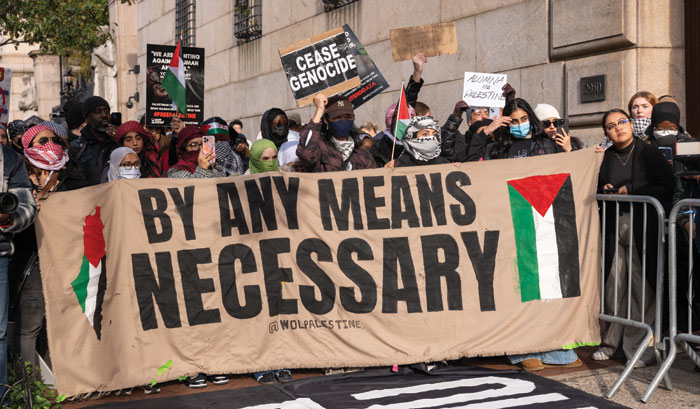 Ralf Hiemisch/Getty Images
Ralf Hiemisch/Getty Images Since October 7th, the Jewish community has been in mourning. Grief is a narrow-minded emotion, with little room for much else; and certainly no room for humor. And yet, even in the worst of times, people have to laugh; it’s more or less instinctive.
Daniel Gordis wrote about a conversation he had:
We were coming out of Minchah yesterday afternoon, and the sky had darkened considerably in the very short time we’d been inside. .. I said to a friend who was standing next to me, “What’s with the clouds? Is it going to rain? I thought it was supposed to be clear this week.”
“No,” he said, “Cloudy with a chance of war.”
I burst out laughing, as did he. It was hilarious. But also not.
This sort of laughter feels transgressive. We are torn, wondering if it is insensitive to make jokes, both in general, and about this horrible war. In November, an article in Yediot Achronot asked: Are we allowed to laugh yet?
A quick glance at Jewish sources yields an unequivocal no. Halakha employs a rigid etiquette that separates joy and grief. It is unseemly if mourners are jovial during shiva; the Talmud writes Rav Pappa said…A mourner should not place a young child in their lap because the child will bring them to laughter, and they will be disgraced in the eyes of other people, because they laughed while in mourning. (Moed Katan 26a.) In another passage, the Talmud goes further, requiring everyone to practice self-denial to connect to the communal pain, and says: Reish Lakish said: It is prohibited for a person to have conjugal relations in years of famine (Taanit 11a.)
Yet these proscriptions don’t always fit ordinary life. (For this reason, later halakhic commentaries often treat these passages as general guidance rather than an absolute religious obligation.) Laughter is found in the darkest moments, and tears at the peak of joy; most people can’t separate their emotions into neat little compartments, to be pulled out at will when needed. As Gordis realized that afternoon, laughter can arrive without an invitation.
“Hogan’s Heroes” was a popular television show when I was young. It was a sitcom about the escapades in a Nazi P.O.W. camp, where the prisoners constantly fooled the hapless Germans. Even as a child, I was bewildered by the show; in reality the Nazis were brutal and efficient, nothing like the characters on Hogan’s Heroes. Later I learned that four of the characters on the show, including those of the three senior Nazis, were played by Jewish refugees from Europe; the parents of Leon Askin, who played the German General Albert Hans Burkhalter on the show, were murdered in Treblinka. This was even more confounding; how could Jewish refugees play Nazis on TV, just 20 years after the war?
While the line between bad taste and good comedy is elusive, Hogan’s Heroes may have landed on the wrong side of what is appropriate. But perhaps a partial defense of this bizarre show can be offered by Robert Clary, who played Corporal LeBeau, a French P.O.W. Clary was a survivor of Buchenwald, who lost his parents and 10 of his siblings during the Holocaust. When he reflected on his experiences later in life, he said his ability to sing, to laugh, and to entertain enabled him to survive. Yes, a good joke can sometimes be the difference between life and death; and during the Holocaust, many used jokes as a tool of survival.
Several books and articles have been written about Holocaust humor, and a number of the jokes have been preserved. (One example: “Every day in the ghetto is like a holiday. We sleep in a Sukkah, dress up like it’s Purim, and eat like it’s Yom Kippur.”) The most thorough academic study of this phenomenon is Itamar Levin’s Hebrew work “Through the Tears.” In his introduction, Levin writes about the different purposes of humor. Sometimes it is the “weapon of the weak,” who get a measure of retribution by mocking their Nazi tormentors. But the larger purpose was to preserve people’s sanity when insanity was the natural reaction, and to give people hope when everything looked hopeless.
Rabbi Jonathan Sacks once offered a comment critical of Roberto Benigni’s “Life is Beautiful,” a film about how a father saved his son’s life during the Holocaust by making jokes. Rabbi Sacks wrote that he disagreed with the film’s thesis that humor can keep you alive. After a speech, a Holocaust survivor approached Sacks to correct him on this point. Rabbi Sacks writes:
“You are wrong,” …(he) said to me, and then, he told me his story. He and another prisoner in Auschwitz had become friends. They reached the conclusion that unless they were able to laugh, they would eventually lose the will to live. So they made an agreement. Each of them would look out, every day, for something about which they could laugh. Each night they would share their findings and laugh together. “A sense of humor,” said the survivor, looking me in the eyes, “kept me alive.”
Sacks then realized that these Holocaust jokes could be heroic and life-sustaining. Reflecting on this later, he wrote: “I cannot say I understand such courage, but I found it awe-inspiring.”
The Halakhic proscriptions against joy in times of grief are quite meaningful; they emphasize the moral obligation to mourn the death of a beloved relative. These rules are necessary because sometimes a Shiva house can feel like a party, with copious food and chatter about golf games and vacations.
However, even at the worst of times, joy must never disappear; Hasidic thinkers have stressed how central joy is to one’s religious identity. This emphasis is not just because of joy’s spiritual importance; recognizing the enormous pain Jews carried from years of exile, the Hasidic masters saw happiness and laughter as the way to heal long-standing psychic wounds.
Even Tisha B’Av, the most tragic day on the Jewish calendar, is recast as a time of joy. First, there is the extraordinary explanation of the Chozeh (Seer) of Lublin to the Talmudic phrase “when the month of Av enters, one reduces joy.” This is ordinarily understood as meaning that one must already diminish joy nine days before Tisha B’av. The Chozeh had a dramatic rereading of this text; he read it as meaning that when the dark month of Av arrives, one diminishes the pain of the month by adding joy! This idea was reflected in practice as well. Some Chasidic Jews had the custom to play pranks on each other on Tisha B’Av; oftentimes it was the children throwing berelach, little brambles during Kinot to lighten up the mood. Chasidic leaders felt that the Jews in Eastern Europe had lived with too much distress, and that a painful Tisha B’Av would do more harm than good.
A similar insight is offered regarding the corresponding phrase “when the month of Adar arrives, we increase joy.” The Sefat Emet notes that Adar is the month that is repeated in a leap year, (such as this year,) when there is a doubling of the month of joy. This, he explains, underlines the centrality of joy; and Jews need as much joy as they get.
Purim this year will be different. A tragic war is still ongoing; much like Av, it will be difficult to laugh. Yet at the same time we need to find a way to lift our spirits, to find that double portion of joy that two Adars bring.
I am a big of the Israel sketch comedy show “Eretz Nehederet.” One of the recurring sketches is of Asher Ben Chorin (Yuval Semo), who is a parody of the average Israeli taxi driver who says outlandish things to his passengers. (The passengers are all in on the joke before they enter the car.) One of the segments in November was exceptional. Semo was driving evacuees from the communities near Gaza in his taxi. He started with his ordinary jokes, talking about how being an evacuee is now a “status,” and remarking to one couple, who were being housed in the Royal Beach Hotel, “that when I was on my honeymoon I didn’t go to such a good hotel.” To Tomer and Guy, two young men from Kfar Aza, he says “you should consider moving to somewhere calmer – maybe Dagestan” before declaring that what was really needed “is to rebrand Kfar Aza, and give it a different name – like Neveh Steinman.”
But then the conversations changed in tone. He takes Noa, a young mother of three from Sufa, who explains that her husband went out that morning to defend their Kibbutz and never returned. Yes, there are jokes in their conversation; when he asks Noa how her kids are, she says “annoying – as always.” She explains that her will return to Sufa because it was her husband’s birthplace and home, and that is where they belong. The conversation ends in tears and a hug.
In his conversation with Tomer and Guy, Tomer tells Semo that both his parents, Ram and Lily, were murdered. Semo says that for the first time in 30 years, he is at a loss for words. Tomer continues, and says that his sister said it is almost a month since their parents’ deaths, and Tomer needed to smile; that is why he signed up to be on the show. And then he adds that it had been his father’s dream to be in Semo’s taxi sketch. The conversation continues on about Tomer’s parents, before ending with Semo wisecracking “Don’t think I’m not going to charge you for this ride.”
From beyond the tears, these gentle jokes honor Ram and Lily; and Tomer and Guy’s smiles carry their legacy. Sometimes, laughter is the right way to grieve; and their tears and smiles combine to leave them stronger.
This Purim we too will laugh and cry; and both the smiles and the tears will honor the legacy of the fallen. Laughter has helped the Jewish people survive. Joy sits at the center of the Jewish soul.
And that is why it is never too soon for Purim, never too soon for a joke.
Rabbi Chaim Steinmetz is the Senior Rabbi of Congregation Kehilath Jeshurun in New York.























 More news and opinions than at a Shabbat dinner, right in your inbox.
More news and opinions than at a Shabbat dinner, right in your inbox.